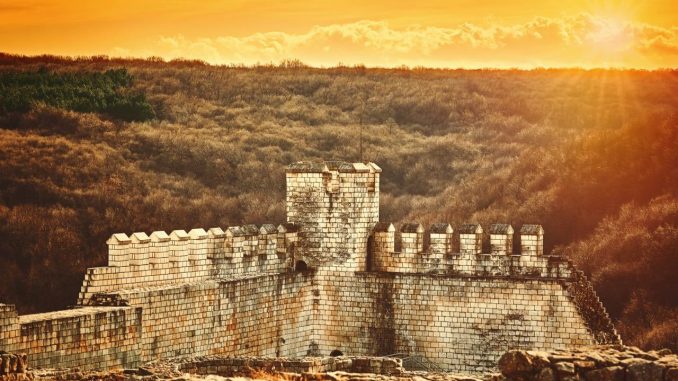
Located in the east of the Balkan peninsula, on the shore of the Black Sea, Bulgaria was historically often the place where traders and travelers, armies and adventurers entered or left Europe.
It’s the definition of a crossroads country, a meeting place of East and West, North and South. In this post, we’ll pay a virtual visit to some of the most beautiful and historic castles in Bulgaria, remnants of a past of alternating wars and peace.
Bulgaria is also one of the oldest inhabited countries in Europe. This is where the Persians conquered Thracians and, later, by the Romans, who were subsequently defeated by the Byzantines.
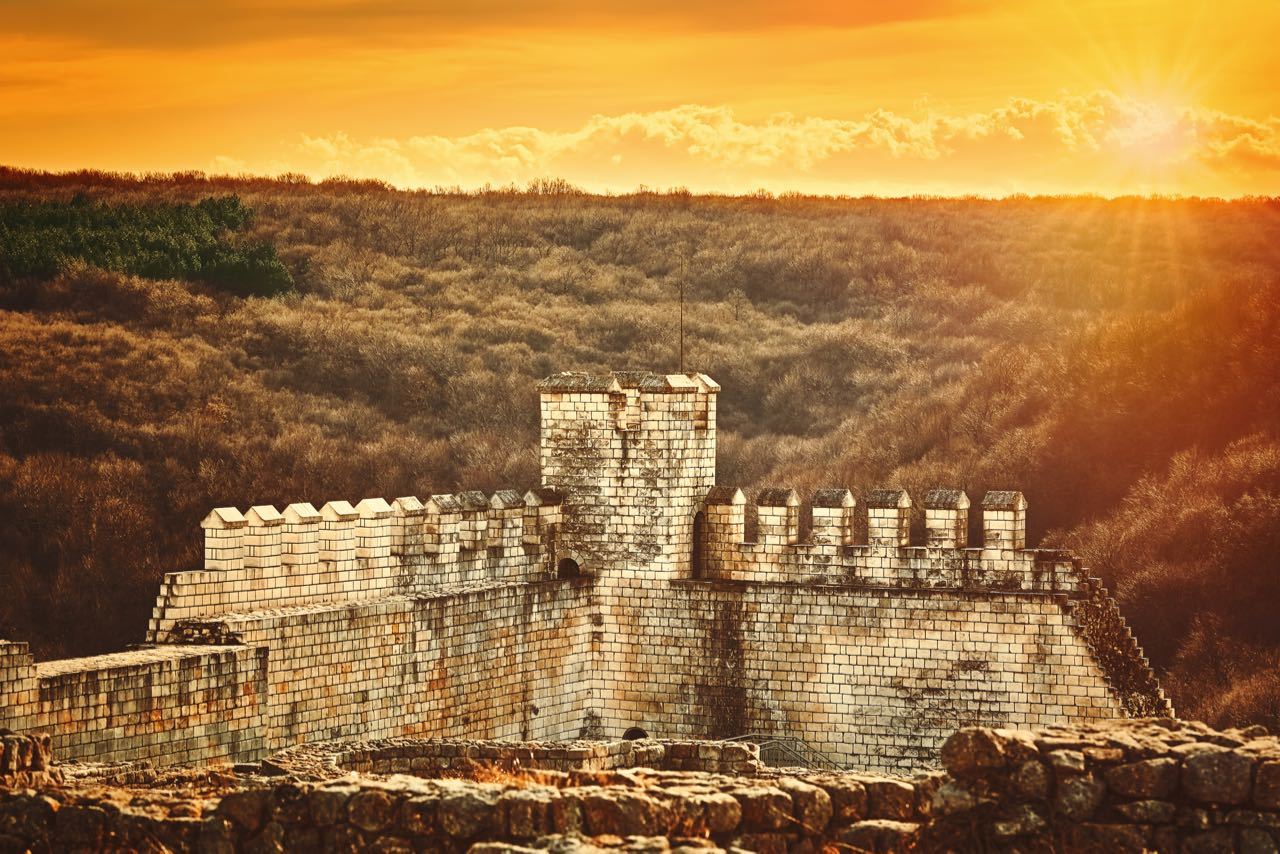
Slavs moved in from the northwest, while Bulgars invaded from the northeast. Wars were fought between the Byzantines and the Bulgars. Even Mongols seized Bulgaria for a while.
Later still, this was a place where the Ottomans battled crusaders from Western Europe.
An incredibly long story short, Bulgaria was the meeting place of many armies. It used to be a region where battles were won and lost, heroic deeds done, massive fortresses erected.
Nowadays, you can still explore this fascinating and eventful past at the many spectacular Bulgaria castles dotted around the country. These are the best ones.
Asen’s Fortress
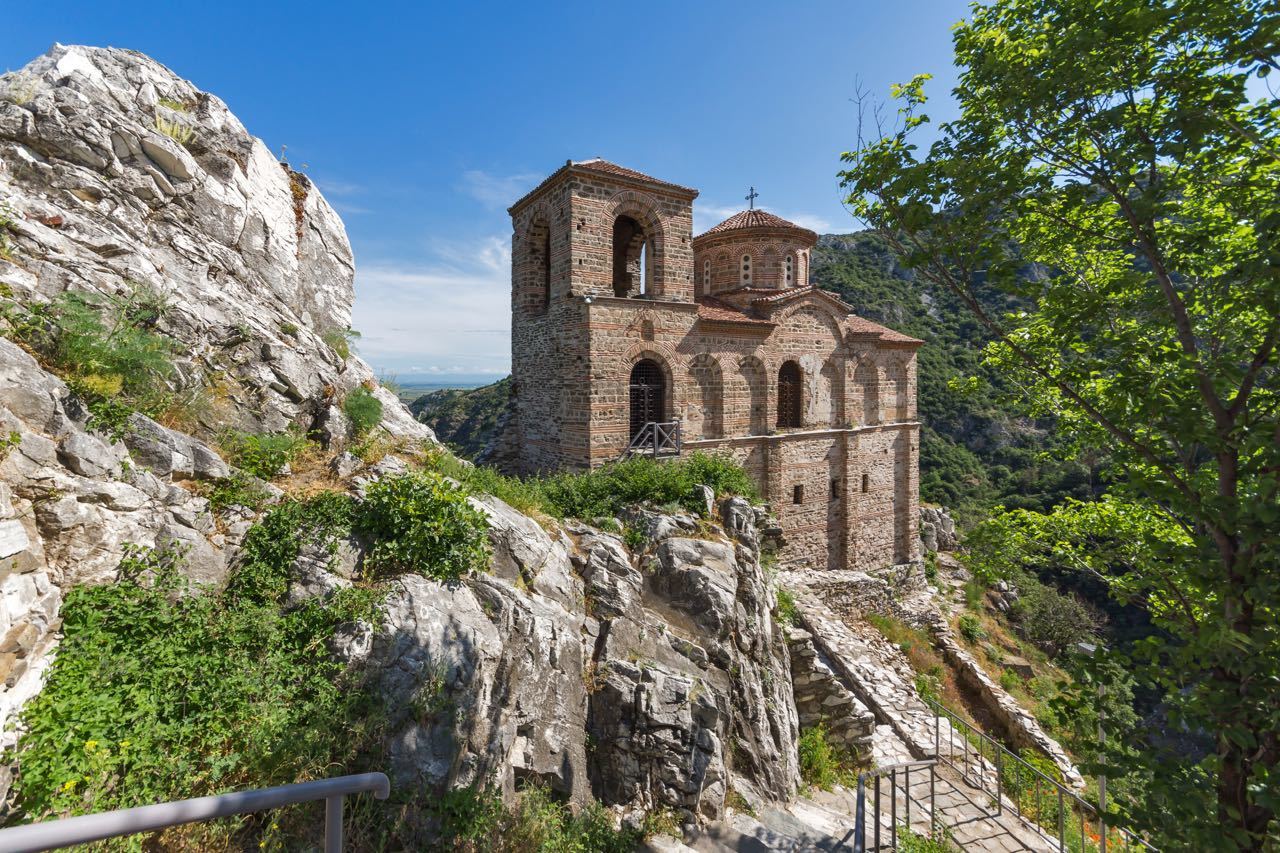
Located in the Rhodope Mountains less than 3 kilometers from Asenovgrad, Asen’s Fortress is an impressive medieval castle perched atop a cliff along the Asenitsa River. It’s a beautifully preserved fortress set in a gorgeous landscape. Surrounded on three sides by sheer vertical drops, it’s only accessible from one side, making it virtually impregnable.
Archaeological discoveries in the area date back to the Thracians, and there’s evidence of habitation in Ancient Roman times as well. The fortress itself, however, dates from the Middle Ages. Conquered by the Third Crusade armies, it underwent a significant renovation in the 13th century.
Left to decay after Ottoman conquest in the 14th century, the only complete surviving building is the Church of the Holy Mother of God, dating from the 1100s and 1200s. The church is still used as a Bulgarian Orthodox church today.
You can learn more about the area’s history at the historical museum in nearby Asenovgrad.
This makes for a great trip when visiting the city of Plovdiv.
Ovech Fortress
Situated in the northeastern Bulgarian town of Provadia, Ovech Fortress goes by various names in different languages. It’s Provat in Byzantine Greek, Pravadi in Turkish and Provanto in Italian.
Shaped like a ship, perched atop a rocky outcrop just east of the town, it dates from the 4th century and was built by the Byzantines. After it fell under Bulgarian control in the Middle Ages, it played a major part in the First Bulgarian Empire.
Many parts of this mighty stronghold are preserved, including the bridge structure connecting the fortress itself and the Tabiite plateau, church ruins, the stone North Gate, marble columns, remnants of prison buildings, and turrets. It’s a popular tourist attraction in this corner of Bulgaria.
Additionally, Provadia is also the location of Solnitsata, controversially known as the “oldest prehistoric town in Europe.”
Tsarevets
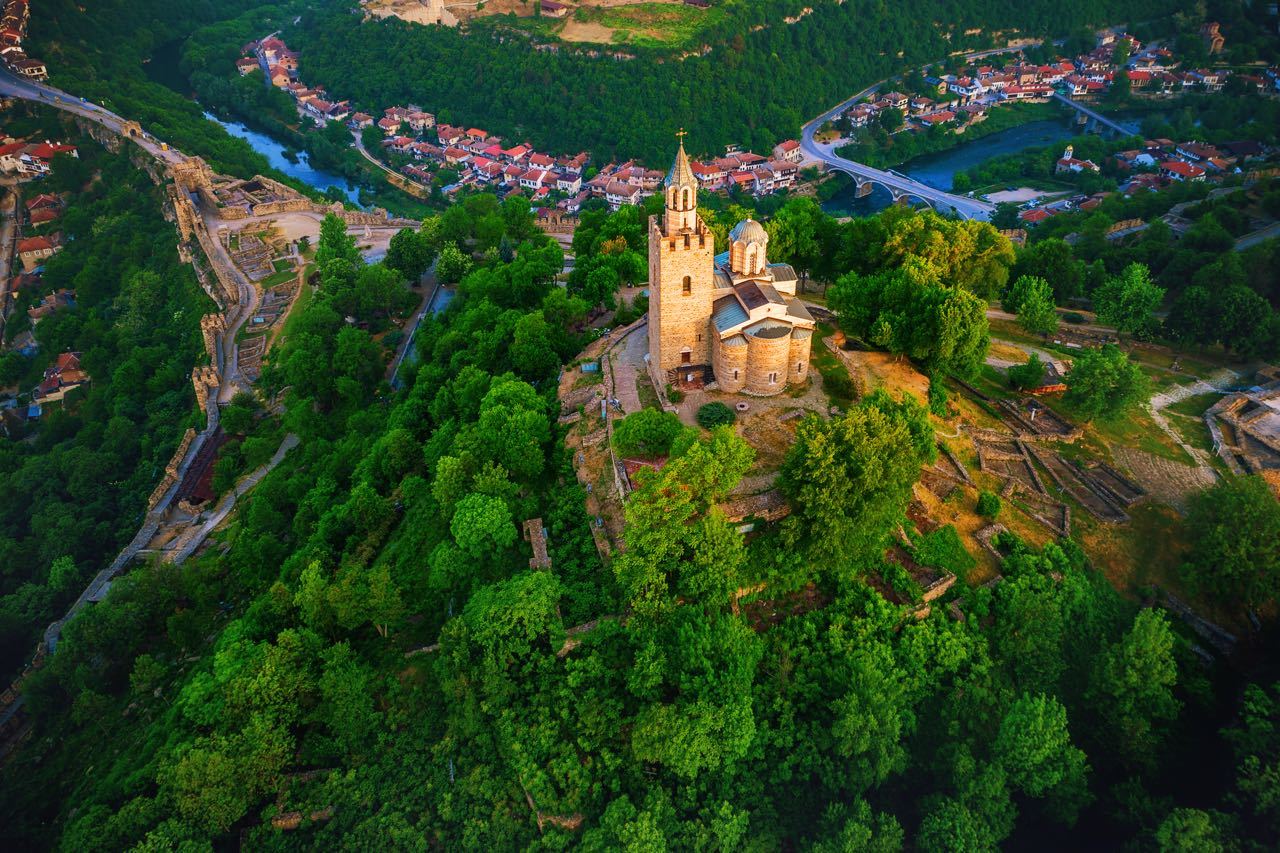
Dominating the Veliko Tarnovo townscape, Tsarevets Fortress is a mighty medieval stronghold. The hill on which it sits was settled in the 300’s. A Byzantine village dating from the late-5th century formed the foundation of this 12th-century Bulgarian fortress.
Veliko Tarnovo was the capital of the Second Bulgarian Empire, which made Tsarevets one of the most important castles in Bulgaria—if not the most important one. It was a magnificent structure with huge dimensions. Boasting a roughly triangular shape, it’s almost completed surrounded by the Yantra River, which makes a triple U-turn here.
As the former seat of Bulgaria’s medieval tsars, this enormous fortress is now one of the country’s most treasured monuments. Its sheer size is shown in the number of buildings it contained: over 400 residential houses, the royal palace, about 20 churches, and four monasteries, and an execution rock.
When you visit Tsarevets Fortress, make sure to stick around after dark. In the evening, the fantastic Sound & Light Show takes place. Through dramatic music, church bells, lasers, and psychedelic lights, it tells the story of the Ottoman conquest of Tarnovo.
Baba Vida Fortress
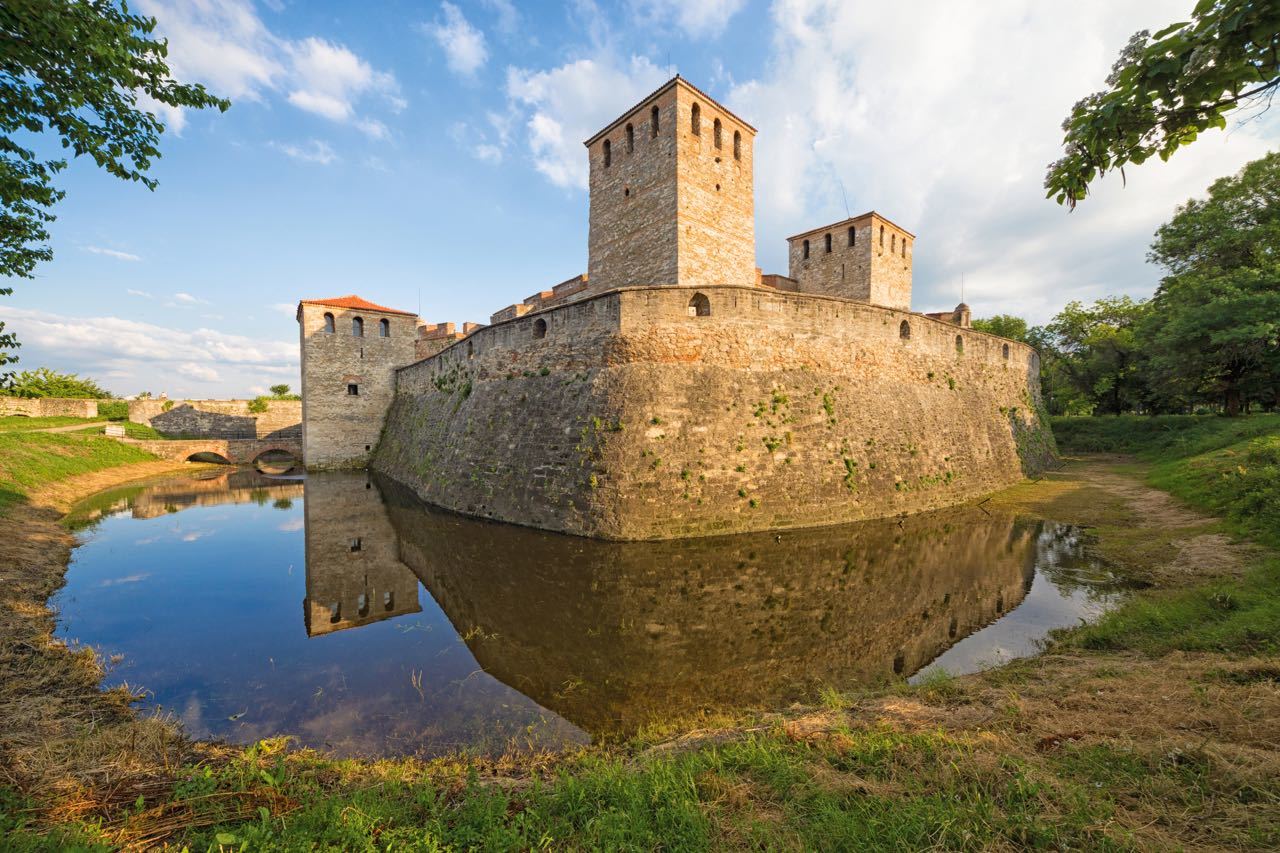
Also called Babini Vidini Kulu, Baba Vida Fortress is an imposing fortress in Vidin, northwestern Bulgaria. Constructed on the Ancient Roman fort of Bononia, it dates from the 10th century and is the subject of a local legend.
The story goes that a Bulgarian King who lived in Vidin had three daughters, called Gamza, Kula, and Vida. Before he died, he divided his realm into three areas, each of which was given to a different daughter.
Vida was the one who got Vidin and the area northward to the Carpathian Mountains. Remaining unmarried, she built this fortress by herself. Hence, its name Baba Vida, which means “Grandma Vida.”
Baba Vida Fortress was a major defensive structure in most of the Middle Ages, arguably the greatest castle in northwestern Bulgaria. For example, it survived a Byzantine siege that lasted no fewer than eight months.
Nowadays, this once-mighty stronghold is a popular tourist attraction in this part of Bulgaria. Visitors can find more information about the area in the Historical Museum in Vidin.
Castra Martis
Named after Mars, the Roman god of war, Castra Martis was a fortified Roman garrison in Dacia—now the Province of Vidin in northwestern Bulgaria. The garrison grew into a town called Kula, which means “tower” in Bulgarian.
Overlooking the Voynishka River, the first part of this castle is believed to have been constructed by Emperor Diocletian’s, who’s also known for Diocletian’s Palace in Split. It protected the vital road between Bononia (now the town of Vidin) and Singidunum (now the Serbian capital of Belgrade).
Nowadays, the ruins are the centerpiece of Castra Martis Historical Park, which also includes a museum housing various artifacts found during excavations.
Belogradchik Fortress
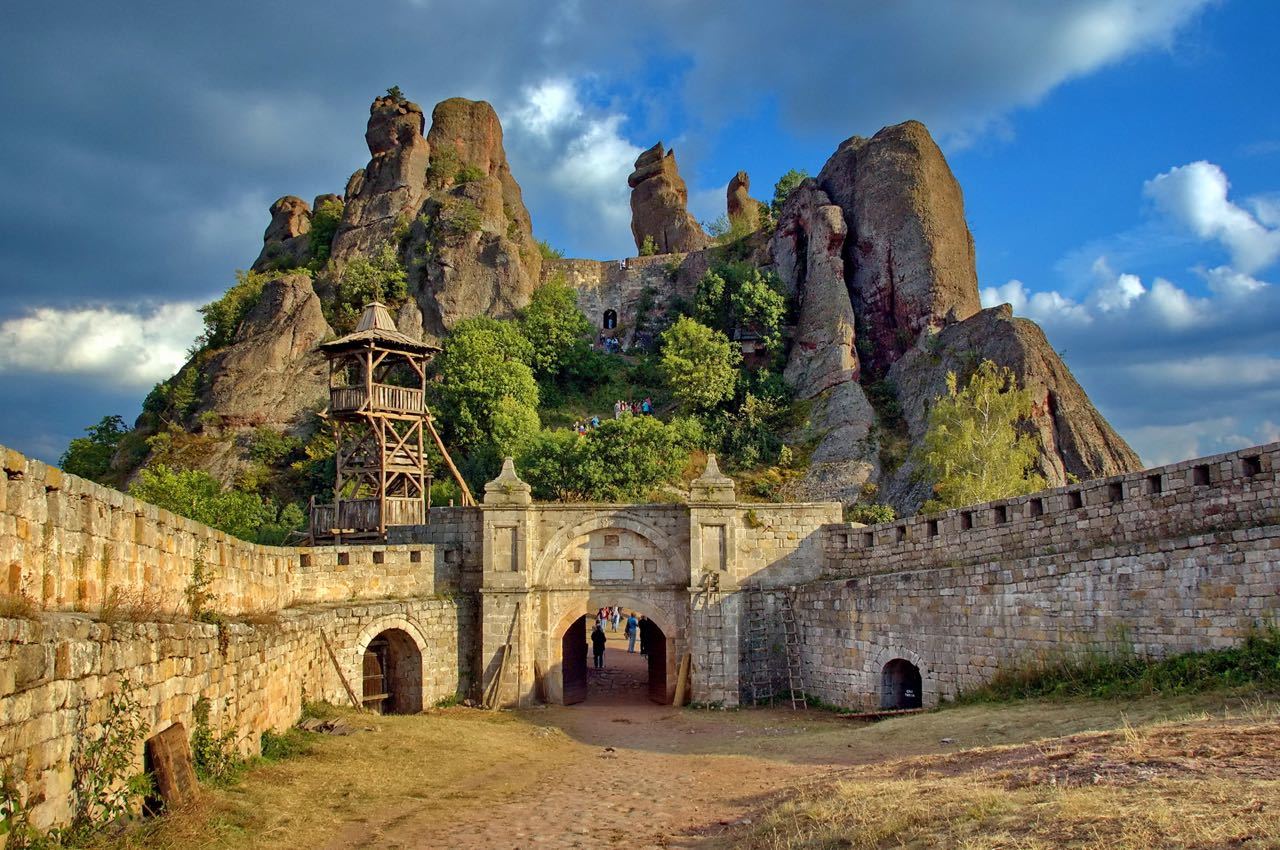
Arguably the single greatest of all castles in Bulgaria, Belogradchik Fortress, is a spectacular stronghold set amid an extraordinary landscape. You’ll find this one near the town of Belogradchik on the northern slopes of the Balkan Mountains in northwestern Bulgaria. It’s the top tourist attraction in the area.
The first structure on this site dates back to Roman times, built mainly for surveillance rather than defense. In the 14th century, Bulgarian tsar Vidin Ivan Stratsimir expanded the building, erecting fortified garrisons at the feet of the towering rock spires around it. It subsequently became the second most important castle in the region, after Baba Vida, the tsar’s capital fortress (see above).
The Ottomans extended it even further and made considerable changes to it.
Belogradchik Fortress is one of the most significant historical landmarks in Bulgaria and is open daily. Visitors can explore the castle and wander through the massive rock formations.
Mezek
In the village of Mezek just north of the border between Bulgaria and Greece, and not too far from Turkey, lies Mezek Fortress. Said to be one of the best preserved medieval castles in Bulgaria, it dates from the 11th century.
This imposing stone castle is remarkable because it had two lines of decorative bricks on its exterior. It has nine defensive towers, 5 of which are along the southern wall, the fortress’ most vulnerable side.
Just like a few other Bulgaria fortresses mentioned in this list, it was conquered by the Ottomans and left to decay.
In 1927, it became an official archaeological site and in 1968 a cultural monument of national importance in Bulgaria. Funding from the EU initiated a partial restoration project, which ran from 2007 to 2013.
Fortifications Of Nessebar
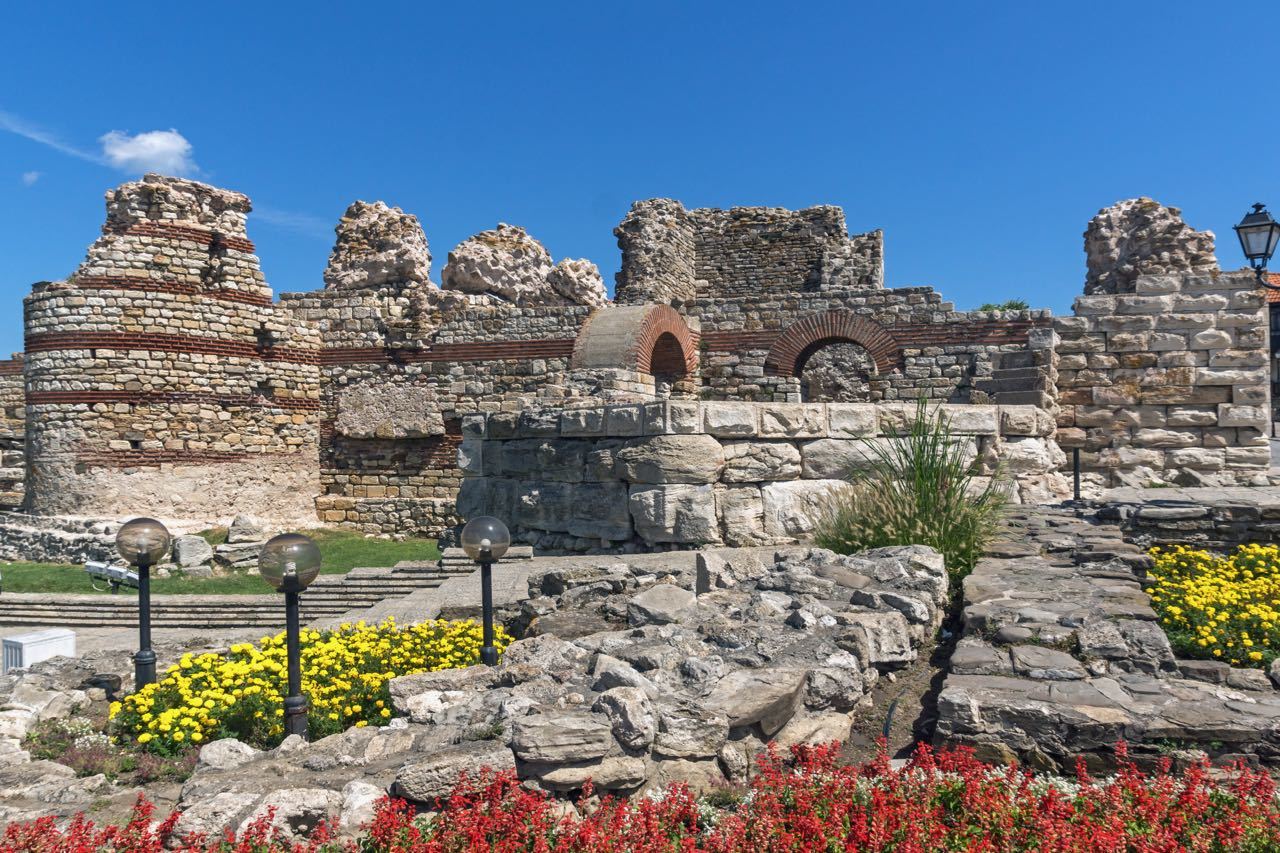
While this is not technically a castle or fortress, the Ancient City of Nessebar still deserves its place in this list of Bulgarian castles.
A UNESCO World Heritage Site, the 3,000-year-old city of Nessebar, originated as a Thracian settlement on the Black Sea coast. Later, it became a Greek colony.
Numerous ruins and historic buildings dot the city today, many of which date from the Hellenistic period.
They include a temple of Apollo, an agora, the Acropolis, and a well-preserved section of the Thracian fortifications. A more recent building is the medieval Stara Mitropolia Basilica.
It’s the remaining fortified wall on the north side of the Nessebar peninsula that’s of most interest to people looking for the best castles in Bulgaria. It’s one of the oldest fortifications in the country, one of many attractions in a fascinating ancient city on the shore of the Black Sea.
Cherven
The Fortress of Cherven is a collection of ruins in northeastern Bulgaria, located near a village bearing the same name. Although the village’s history goes back more than 2,000 years, the fortress dates from the Middle Ages.
It got a boost in importance when it became the seat of the Bulgarian Orthodox Bishopric of Cherven in 1235. Shortly after, Mongol Golden Horde raids damaged the structure. Byzantine forces successfully besieged it in the late-13th century.
Its heyday was still to come, however, and in the 14th century, it consisted of a fortified inner town and an elaborate defensive system. It became known as a hub of craftsmanship, home to skilled goldsmiths, ironworkers, and artists.
Currently, the remains of medieval Cherven offer an essential insight into Bulgarian culture in the Middle Ages. A popular tourist destination, excavations include 13 churches, a feudal palace, workshops, streets, houses. Its main landmark is a beautifully preserved three-story-tall tower from the 1300s.
Shumen Fortress
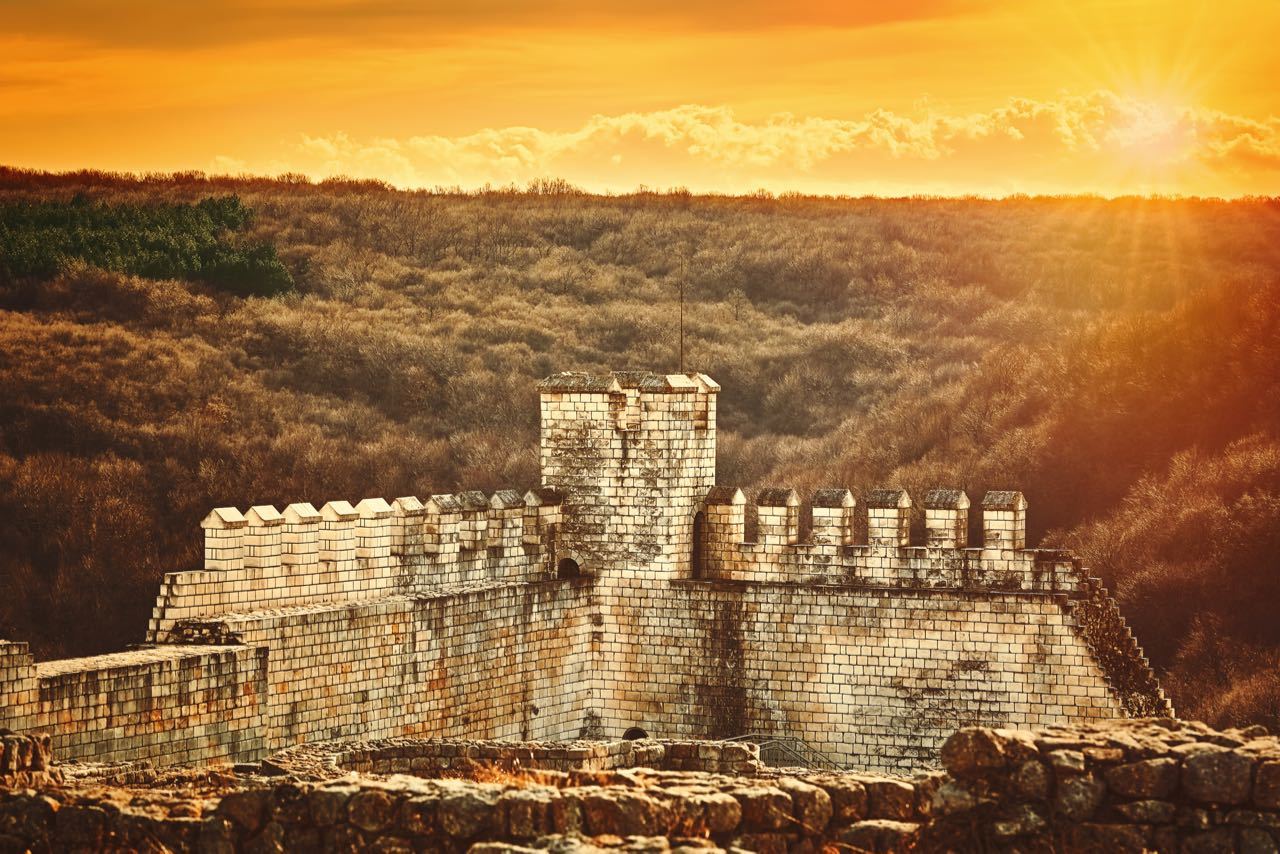
One of the most significant architectural landmarks in Bulgaria, Shumen Fortress lies about 3 kilometers from the town center of modern-day Shumen. Overlooking the town and surrounding landscape, this is a spectacularly restored castle, its renovation completed in 2015.
Now part of the Shumen Plateau Nature Park, the fortress is one of the oldest castles in Bulgaria. Shumen Fortress has historical links to a nearby Iron Age village, a site later captured by the Thracians in the 5th century BC.
The Romans fortified it and built walls and towers, and the Byzantines made it a garrison town. In the Middle Ages, the fortress experienced its heyday as a Bulgarian Empire stronghold.
Destroyed by the Ottomans in 1444, it was unused for several centuries until a restoration project commenced in 2012. Now, Shumen Fortress contains the outlines of this once-vast defensive structure, restored walls and towers, and walking paths.
Lyutitsa
Although most of it is now in ruins, some parts overgrown by vegetation, Lyutitsa Fortress is still considered to be one of the best-preserved castles in Bulgaria. It lies 5 kilometers from Ivaylovgrad in the Eastern Rhodope Mountains.
Also known as the “Marble City” for its white marble walls, Lyutitsa occupies a 26,000-square-meter area and used to have 12 defensive towers, 8 of which remain. The fortress’ walls are about 600 meters long and up to 10 meters tall.
It’s a primary archaeological site, and findings include coins, pottery, tools, jewelry, and day-to-day artifacts. You can see many of those items at Ivaylovgrad’s Municipal Museum of History. Among several buildings that have been discovered are a necropolis with 15 graves, two ruined churches, the donjon, and the citadel.
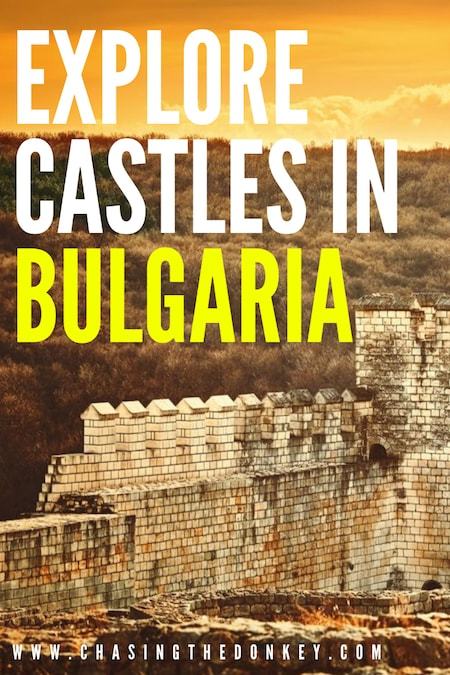
PIN THIS!
Castle Of Ravadinovo
While all other Bulgaria castles above were strongholds and fortresses, the Castle of Ravadinovo has an entirely different purpose. This impressive castle only a couple of kilometers from Sozopol is one of the most extraordinary castles in Europe. Thanks to its ornate steeples and towers, intricate architecture and decorations, it’s been compared to famous castles like Neuschwanstein Castle.
When imagining a fairy tale castle, it’s quite likely you’ll think about a building that looks like Ravadinovo Castle. What’s so remarkable about this particular castle in Bulgaria is that it’s not old at all. Also known as “In Love With the Wind” castle, it was built in just 20 years by only one man.
Even though, and maybe even because this is a building resulting from one man’s dream, a place where black swans swim in a beautiful lake, with gardens filled with flowers, it’s a fantastic destination, one of the greatest tourist attractions in Bulgaria. Some visitors will fall head over heels in love with this castle, while others might think it’s a bit kitschy and out of place. Either way, you won’t know until you visit it yourself, which you’re definitely encouraged to do.
Did we miss a castle in Bulgaria that should be on the list? If so, please let us know below, and we’ll gladly add it.
Other Bulgaria Travel Blogs You May Like
- Things To Do In Bulgaria
- Things To Do In Sofia
- Best Day Trips From Sofia
- Things To Do In Varna
- Bansko Ski Resort
- Bulgarian Festivals
- Rent A Car Bulgaria
- Most Beautiful Caves In Bulgaria

Leave a Reply